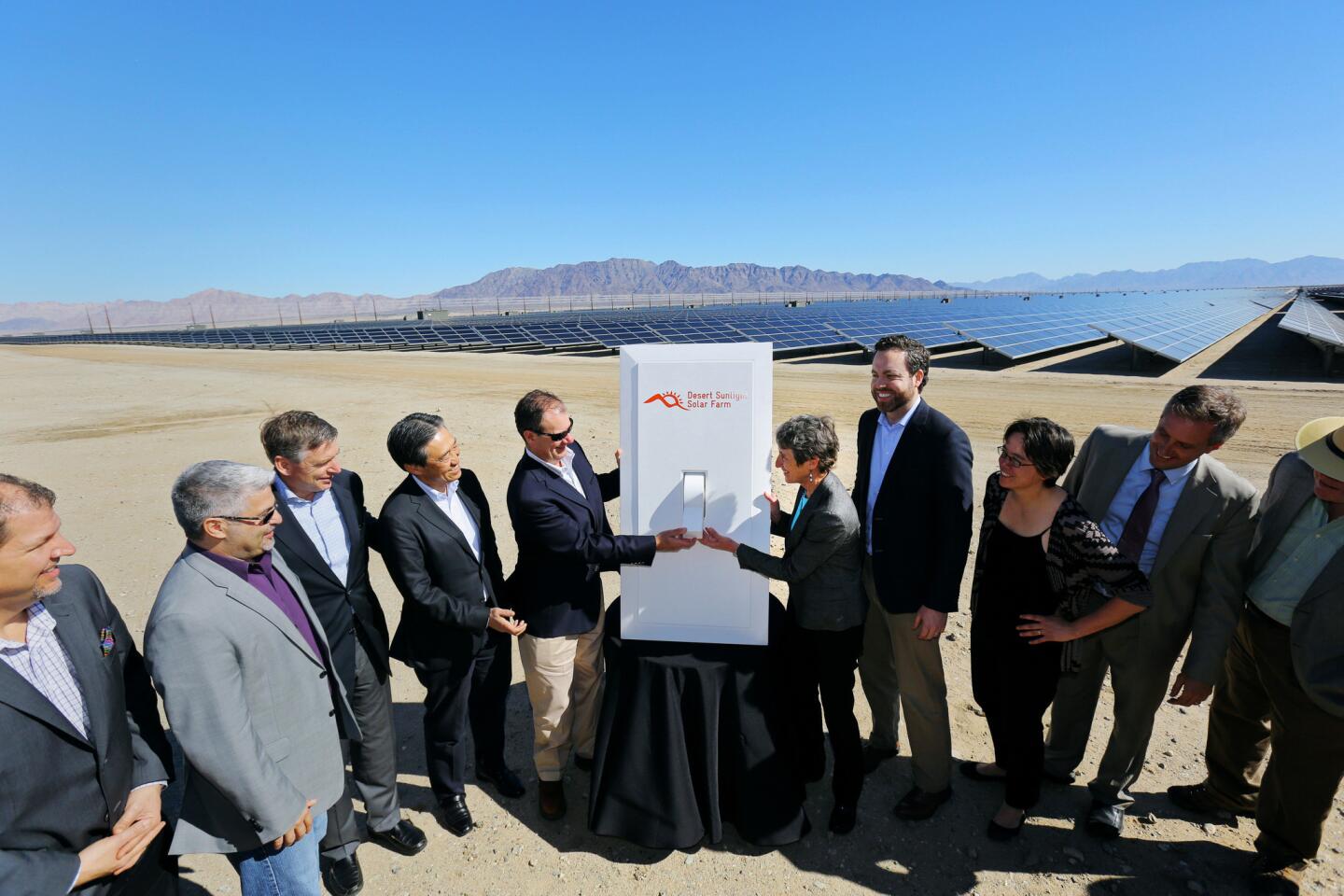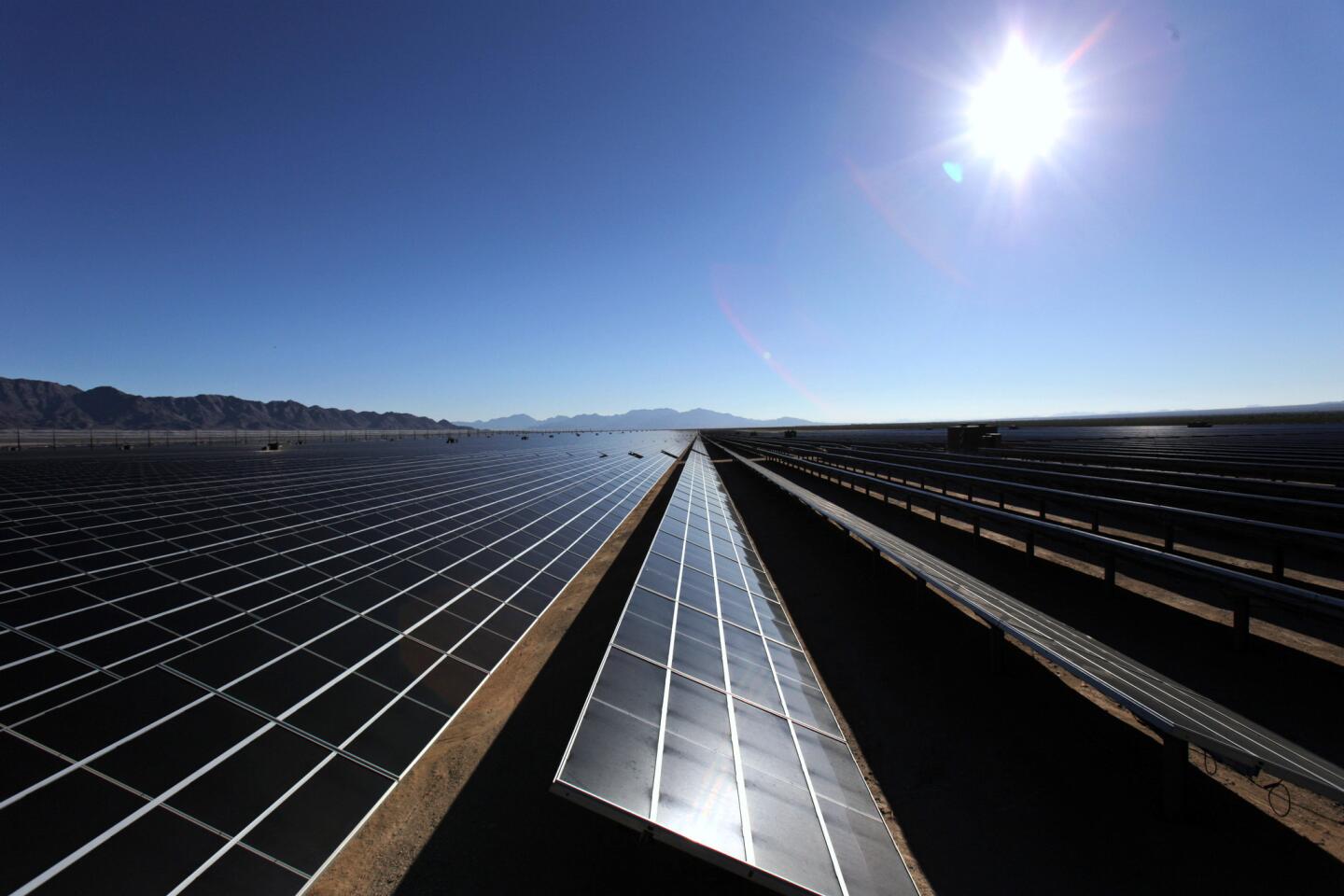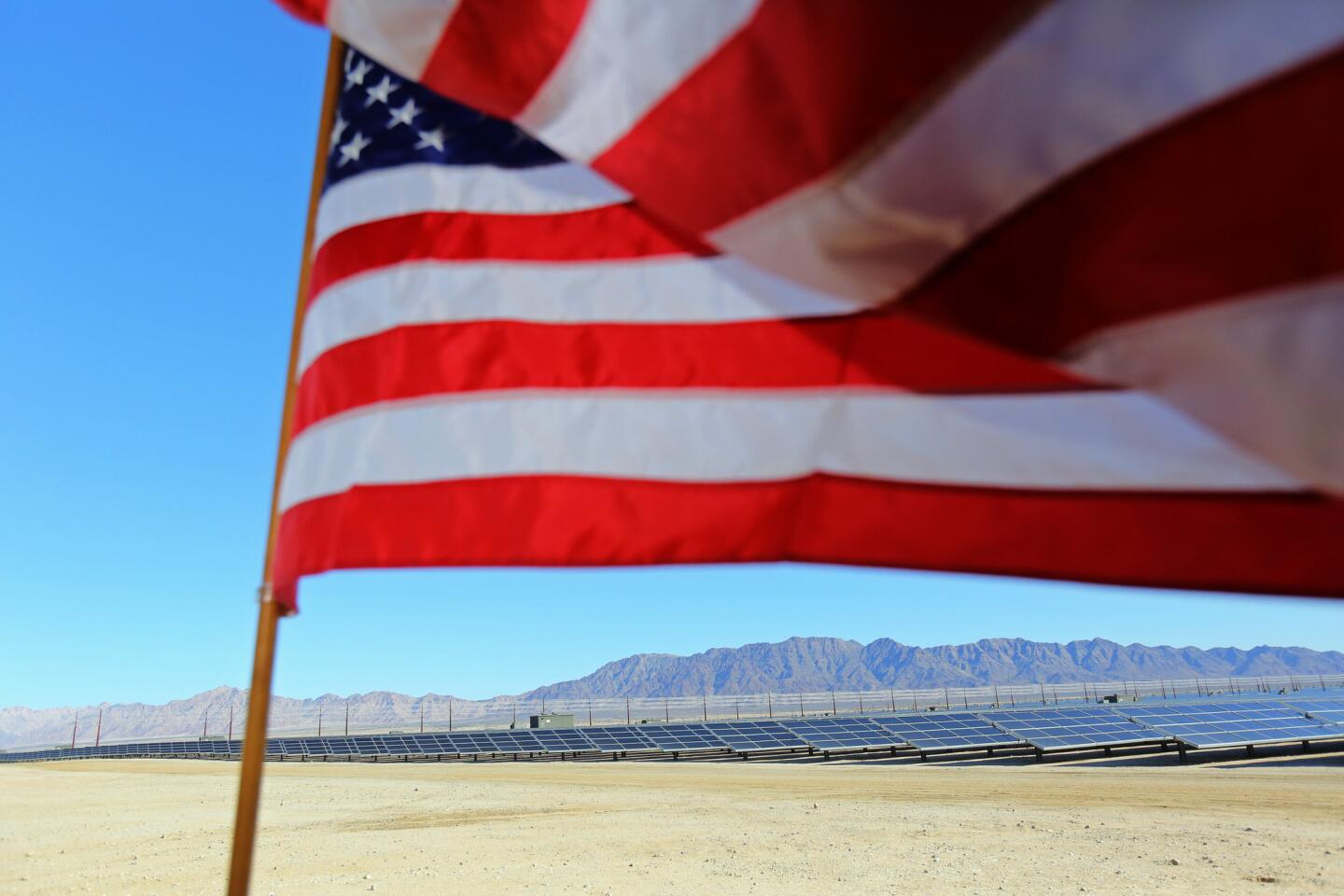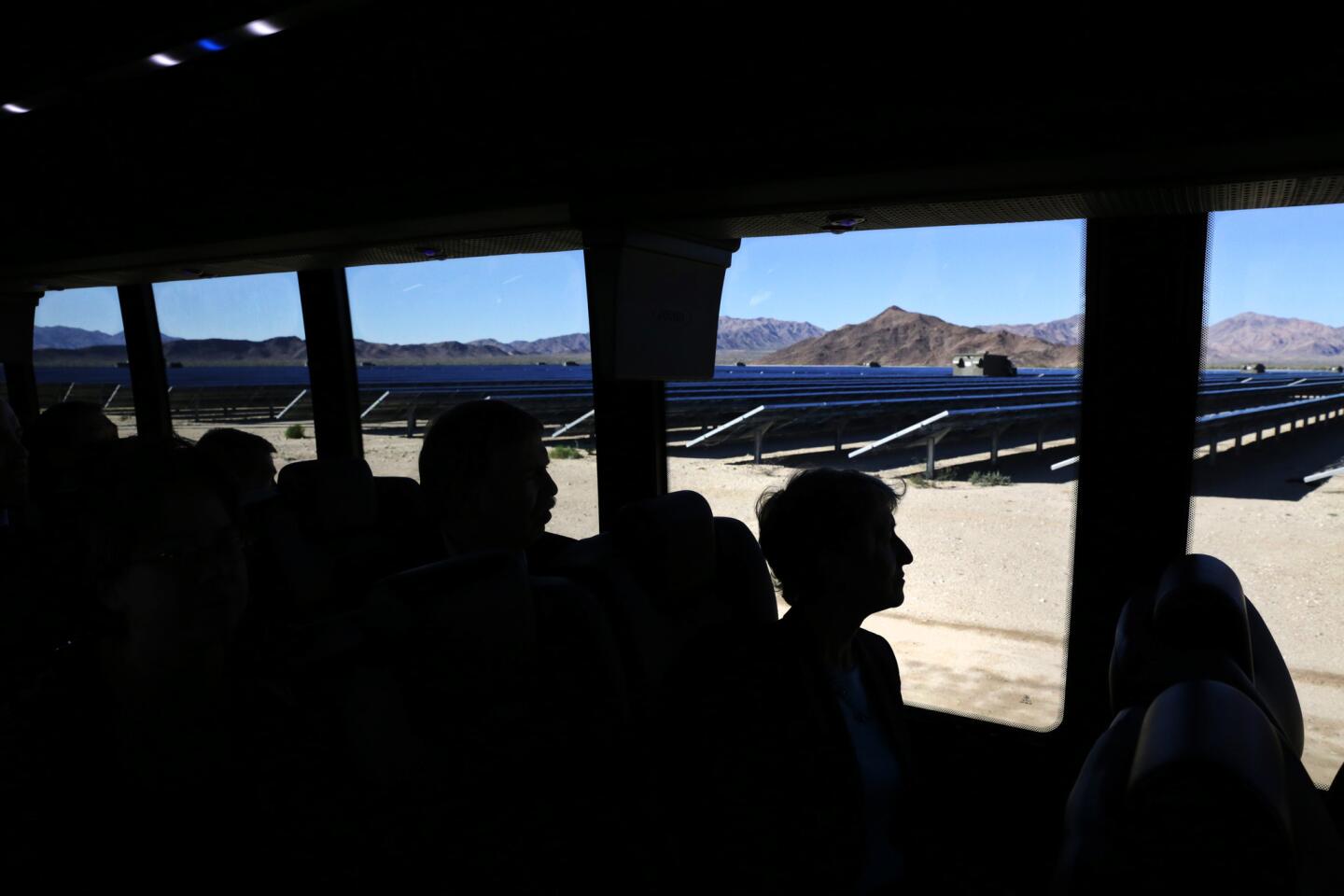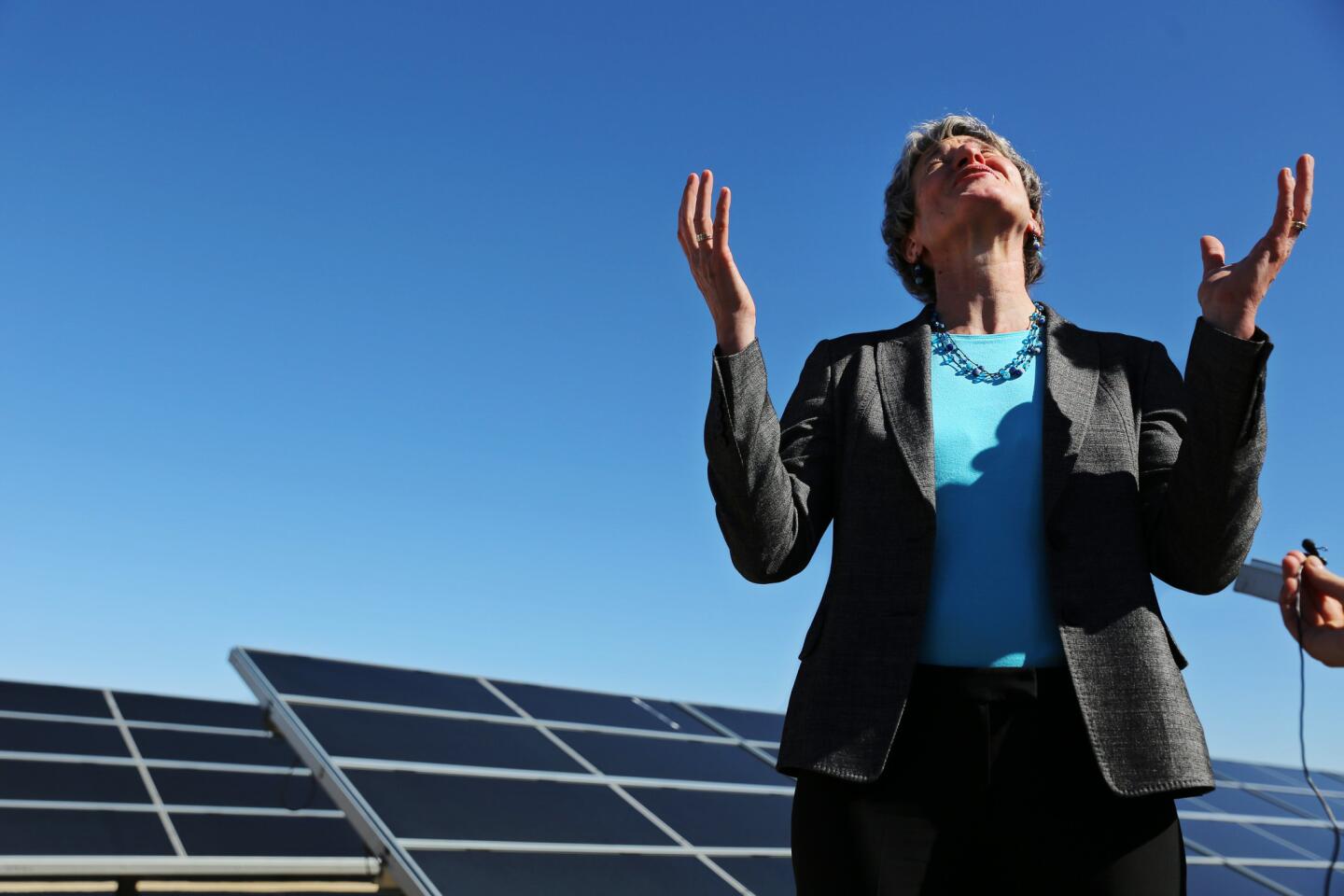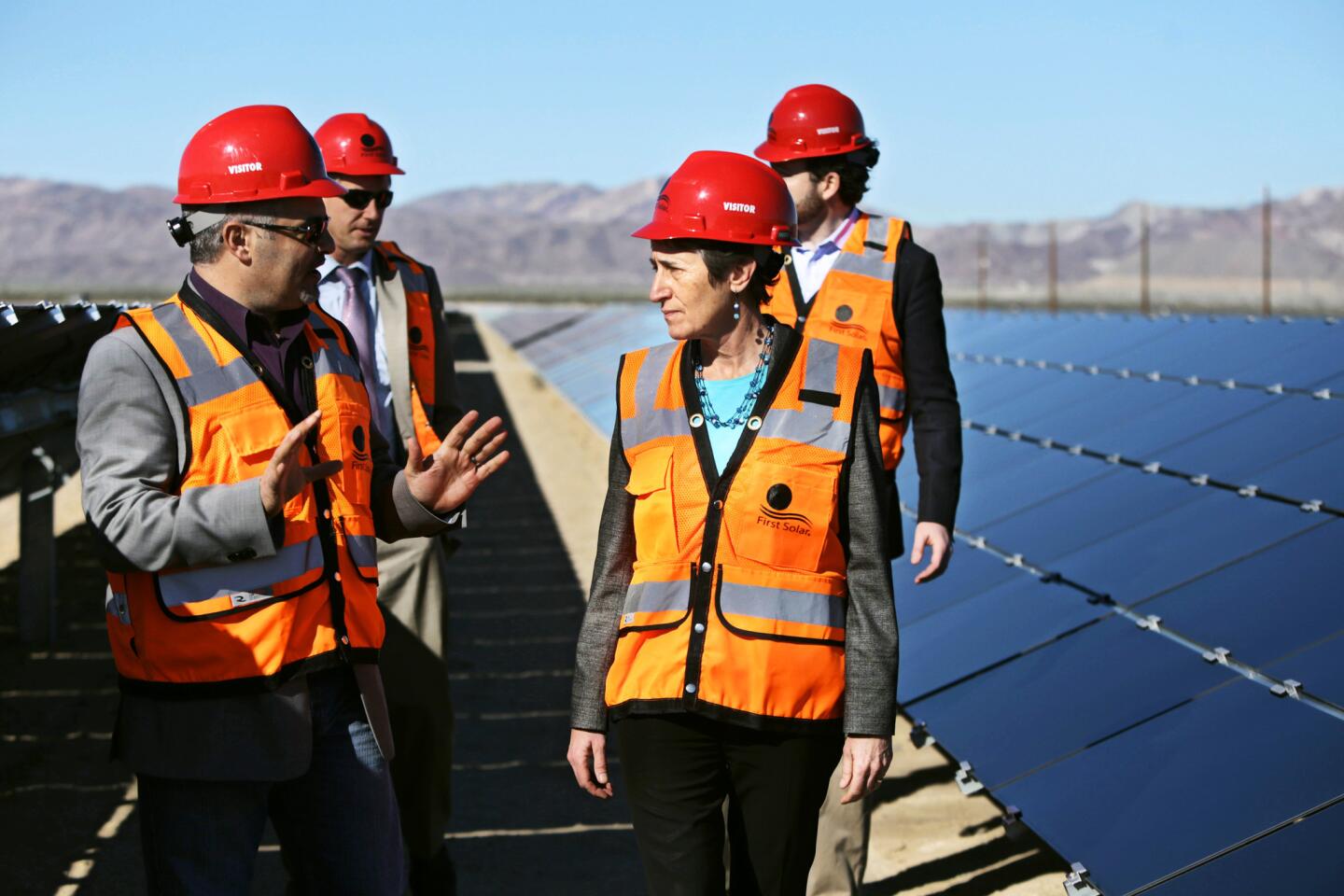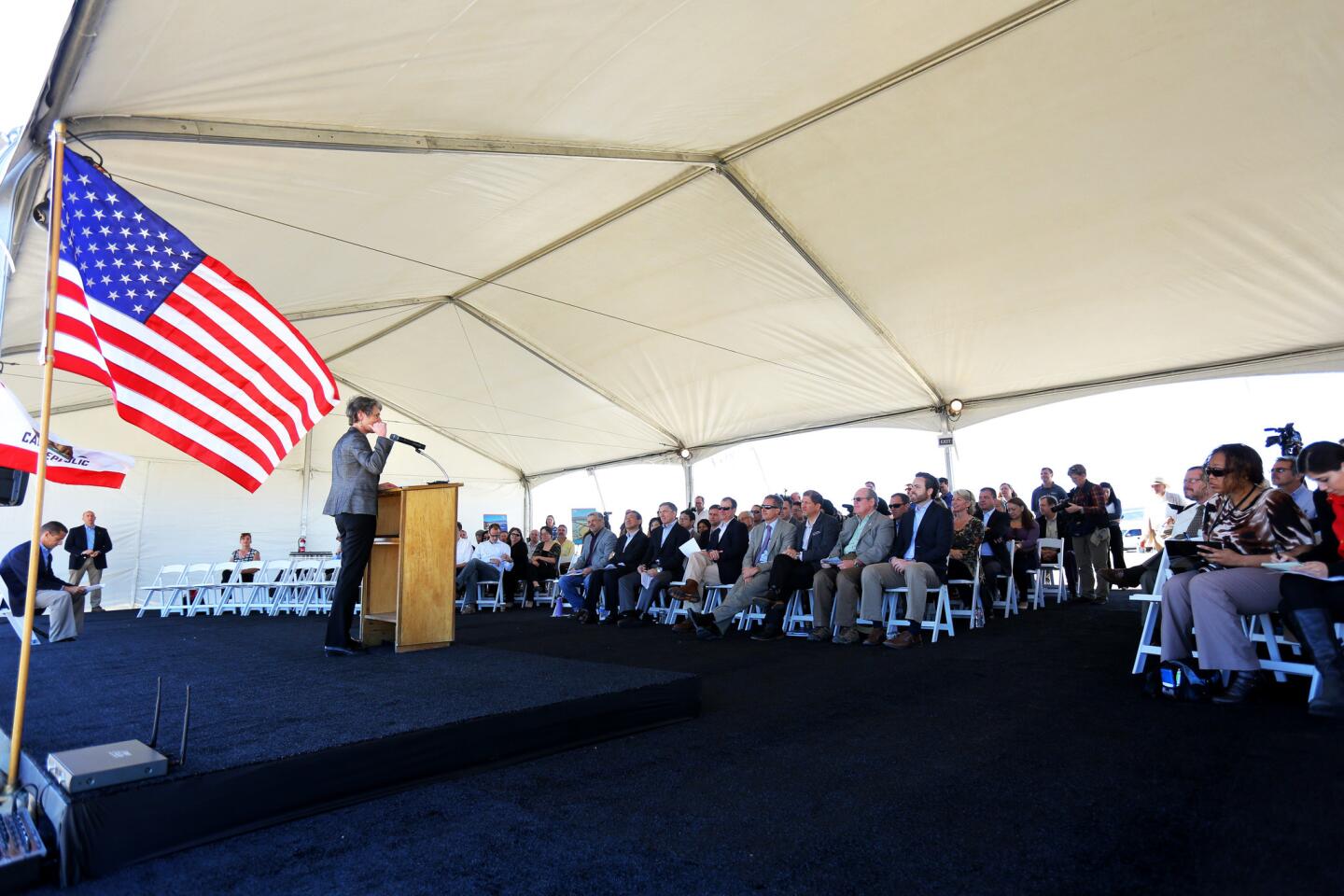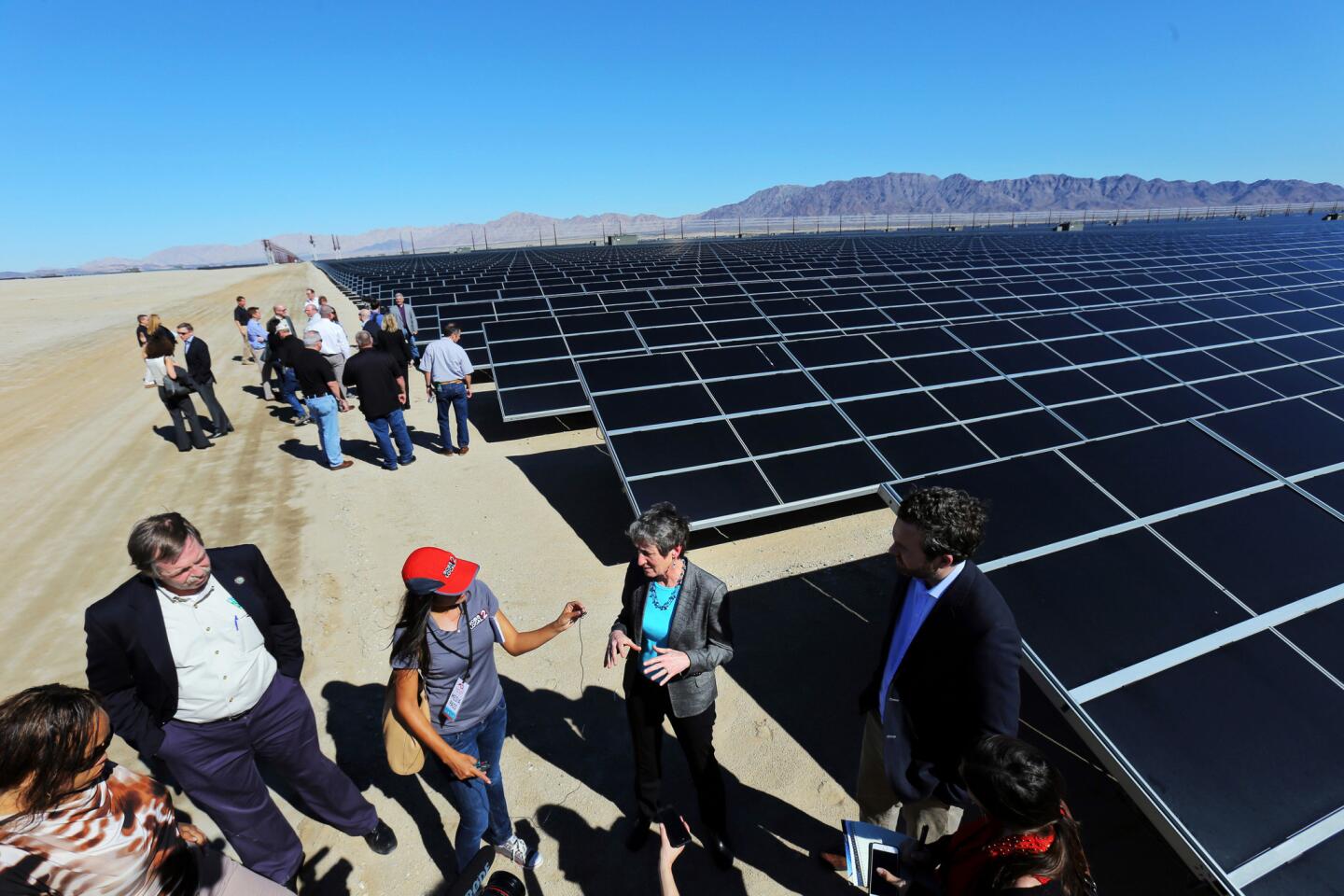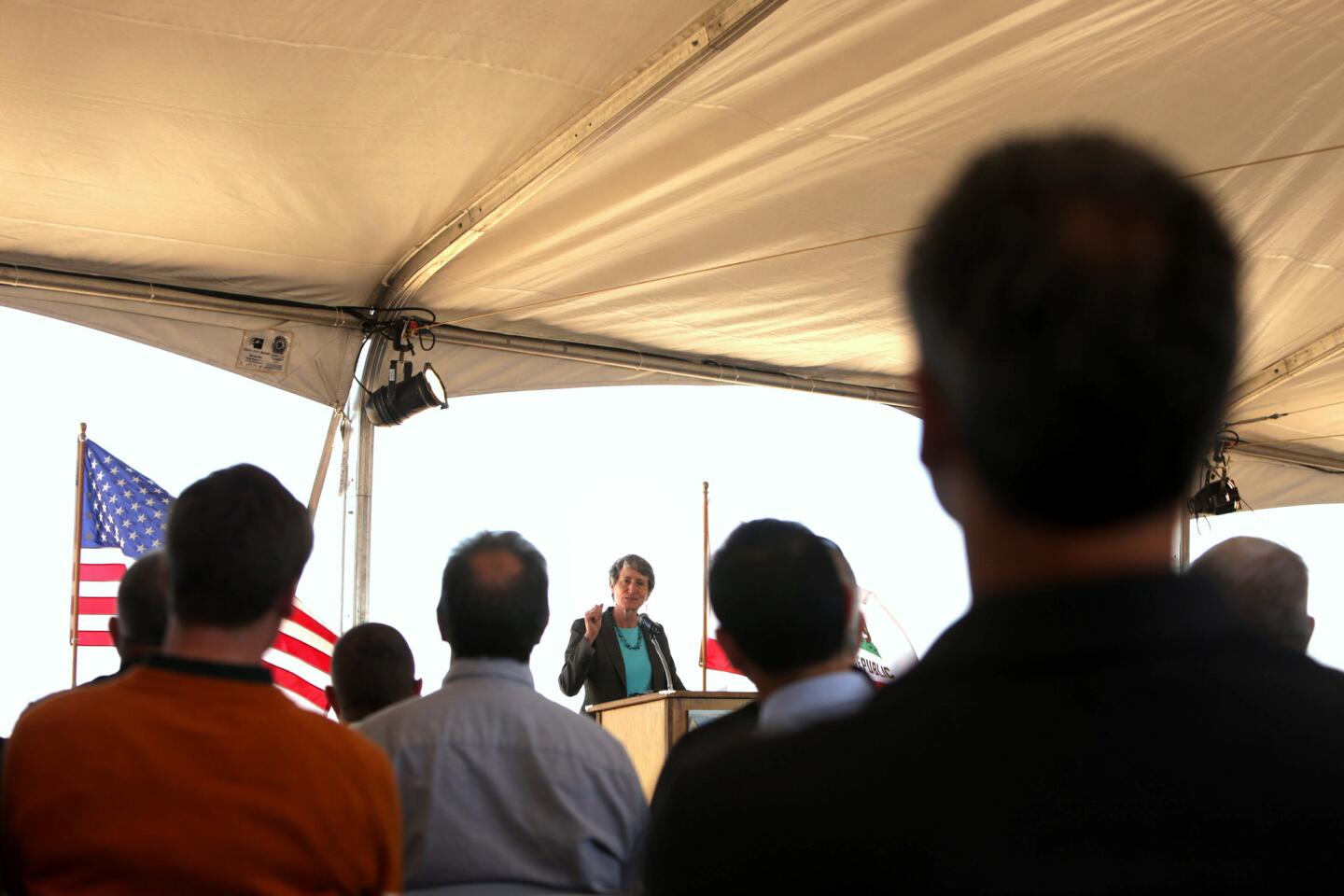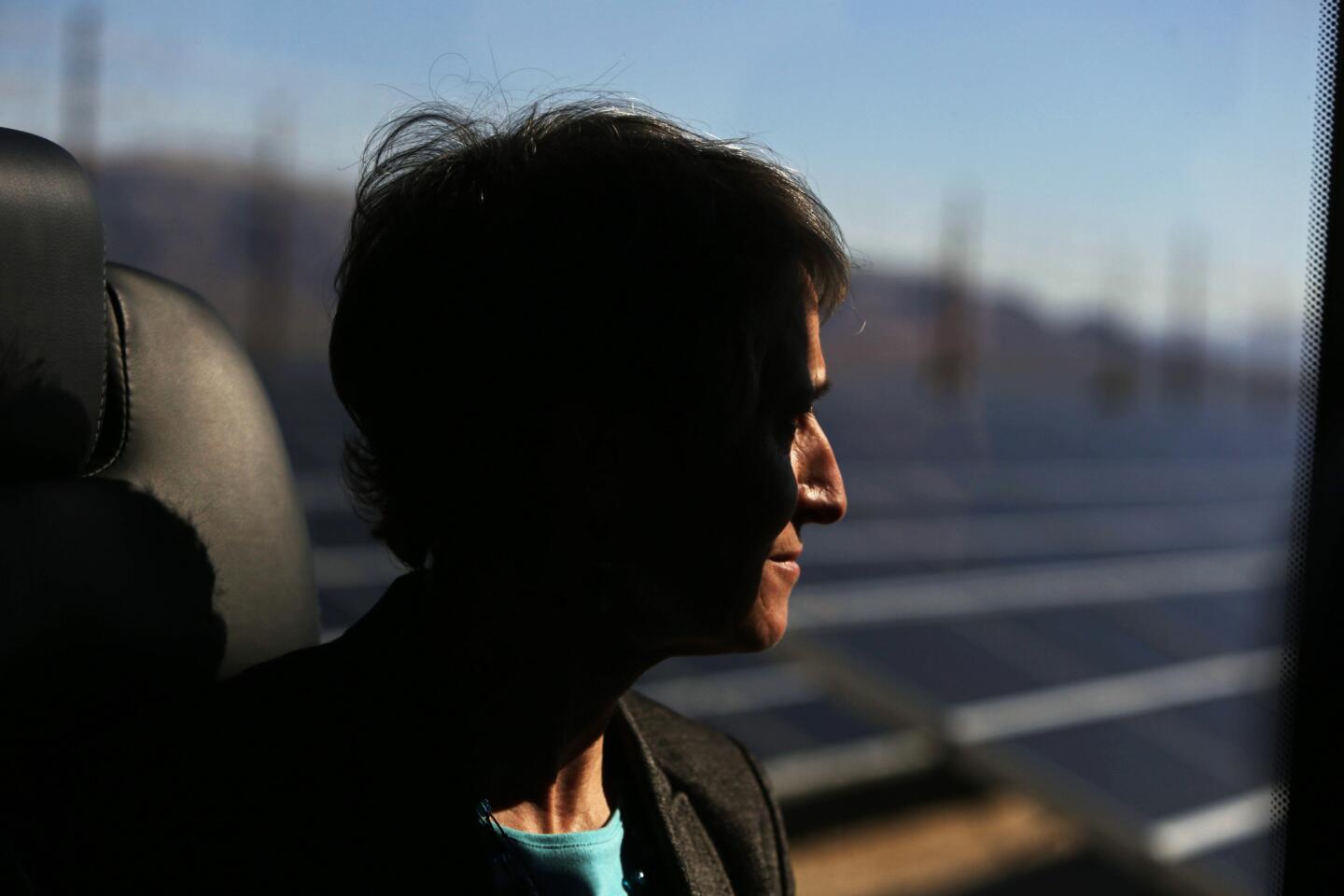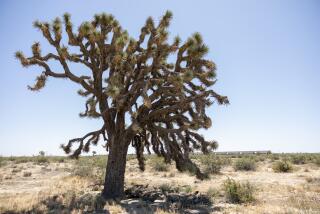Huge solar farm opens in California: Enough energy for 160,000 homes
About 4,000 acres of shiny black solar panels stretch across Riverside County near Joshua Tree National Park, where on Monday U.S. Interior Secretary Sally Jewell dedicated one of the largest photovoltaic solar energy farms in the world.
“This is the beginning of a renewable energy future,” Jewell said before helping turn on a large model light switch.
Desert Sunlight Solar Farm, a 550-megawatt farm that is the largest on public lands managed by the federal Bureau of Land Management, began operating in December 2014 and will provide enough energy to power more than 160,000 average California homes annually, said Georges Antoun, chief operating officer of the farm’s Tempe, Ariz.-based developer First Solar Inc.
Desert Sunlight opens at time of uncertainty for future utility-scale solar development in California, which has been slowing in recent years as federal assistance begins to disappear and investor interest fades.
But executives involved in Desert Sunlight — a joint venture of NextEra Energy Resources, GE Energy Financial Services and Sumitomo Corporation of America — were optimistic Monday.
Pacific Gas & Electric Company and Southern California Edison already have agreed to purchase power from Desert Sunlight for the next two decades.
Before 2009, Jewell said, no solar projects had been permitted on public land. Today, there are 29 permitted commercial-scale solar projects throughout the Southwest. Desert Sunlight is the sixth solar project to come online, and eight more are under construction, she said.
First Solar received $1.46 billion from the U.S. Department of Energy, a partial loan guarantee funded by a group of private investors, to finance the project.
The loan program has since ended.
Solar energy generation is slowly becoming price-competitive with conventional energy sources, especially as the price of photovoltaic panels decreases.
Antoun said he expects the company will explore other forms of solar energy generation that use less land area than the approximately 4,000 acres the PV field requires. Such large energy developments are becoming increasingly challenging amid new federal regulations that seek to minimize both the actual footprint and the environmental impact of power projects.
“The 550(-megawatt projects) probably will be lesser and lesser just simply because of the dynamics of land, but I would see it as an important part of the future of renewable energy,” Antoun said.
One major obstacle for solar development has been the looming expiration of a 30% federal investment tax credit, which is scheduled to fall to 10% at the end of 2016. Jewell said she is committed to urging Congress to continue such benefits, as it has with fossil fuel industries.
Another challenge for solar energy developers is that California and other states are already on track to meet increased requirements for renewable energy generation. That had reduced the incentive to invest in solar energy development.
But the outlook may be more positive after Gov. Jerry Brown in his inaugural speech last month called for half of the state’s power to come from renewable sources by 2030, up from the previous goal of 33% by 2020.
The Obama administration has also made renewables a priority. The administration set aside 22 million acres in California to support renewable development and pledged to generate 20,000 megawatts of power from federal land by 2020, enough to power about 6 million homes.
Twitter: @taygoldenstein
More to Read
Sign up for Essential California
The most important California stories and recommendations in your inbox every morning.
You may occasionally receive promotional content from the Los Angeles Times.
